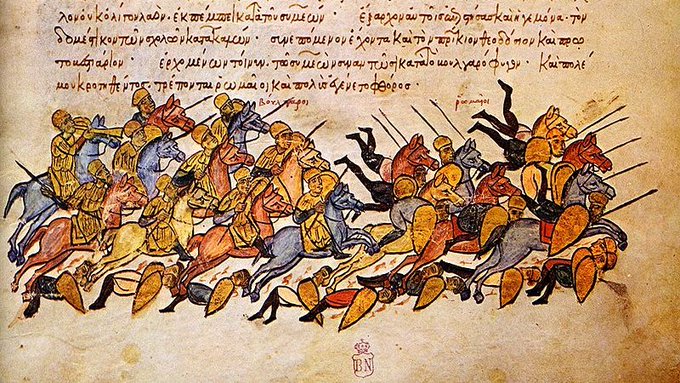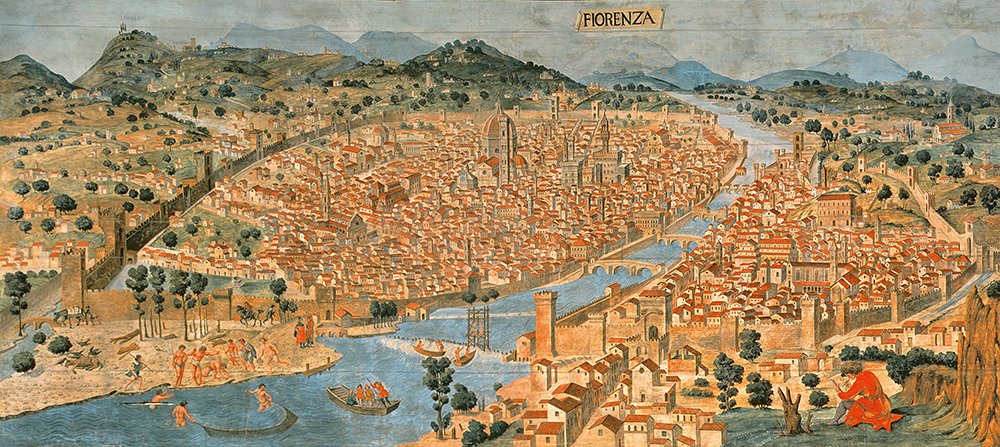Tsar Simeon I of Bulgaria. The most successful ruler of Bulgaria, who brought it to its greatest extent.
He did it largely by observing the Byzantines and beating them at their own game. Thread.

He did it largely by observing the Byzantines and beating them at their own game. Thread.


Simeon was born the same year his father, Tsar Boris, converted Bulgaria to Christianity. Simeon was a younger son, intended for the priesthood, so he was sent to Constantinople as a youth to study theology—he was raised in the Church. 

Boris retired to become a monk, leaving the throne to Vladimir, his first-born. The new tsar tried to return the empire to the old religion though, so Boris came out of retirement to remove Vladimir and crown Simeon instead. 

The year was 893. Bulgaria had been at peace with Byzantium for several decades and was under its cultural sway. Bulgarian merchants brought goods back from Constantinople and Byzantine priests taught Bulgarians the new religion.
Most important, Tsar Simeon had been raised in Constantinople and was shaped by Byzantine culture. It would guide him in the coming years. 

In 894, perhaps fearing Bulgaria’s growing cultural, economic, and military power, Byzantine emperor Leo VI declared that Bulgarian merchants could no longer trade at Constantinople; henceforth they could only go through Thessalonica. 

This cut into the Bulgarian crown’s revenues and was a slap in the face to Simeon. Enraged, the tsar declared war and invaded:
https://twitter.com/byzantinemporia/status/1217794587009409030
Leo was occupied in the east at the time, so he hired the Magyars living north of the Danube to attack Bulgaria. They were effective, but Simeon soon beat the Byzantines anyway and forced a favorable peace.
What is interesting is how Simeon handled the Magyars.
What is interesting is how Simeon handled the Magyars.

Bulgaria had inherited the problems of Byzantium’s Danube provinces. They were constantly threatened by nomadic peoples migrating across the steppe, most recently Leo’s Magyar allies. In response, Simeon developed a typically Byzantine solution… 

Simeon’s forces had been worsted by the Magyars during his war with Leo, so rather than try to fight them alone, he hired another, more distant steppe people: the Pechenegs.
The Pechenegs had previously been Byzantine allies, used to fight the Magyars and Rus. This was how Constantinople often dealt with new threats from the steppe, paying others to fight for them, rather than conduct an even more costly campaign themselves. 

Simeon was successful on the cultural front too. He established a literary school at Preslav, the new capital of Christian Bulgaria, to encourage Slavonic literature in imitation of Greek models. 

That was where the Cyrillic script was adopted for the first time (replacing the older Glagolithic), imitating the cursive Byzantine script. 



But in 913, Bulgaria and Byzantium were back at war. The new emperor had refused to pay tribute, so Simeon invaded, appearing in strength before Constantinople. He got the patriarch to crown him Emperor of the Bulgarians, placing him on equal footing with the Byzantine emperor.
After a palace coup, though, the Byzantines renewed the war. Simeon’s forces were victorious and made large gains in Macedonia, the western Balkans, and eastern Thrace. 

Simeon ultimately wanted to conquer Constantinople and become Emperor of the Romans, merging the two realms. But the walls were too strong, and he was unable to form an alliance with the Arabs for naval support. 

Simeon died in 927 and his son Peter inherited the throne. Peter made peace with Byzantium in return for very important concessions. First was the recognition of the title Emperor of Bulgaria, putting him on an equal footing with the Byzantine emperor Romanus.
Second was the hand of Romanus I’s granddaughter, which opened up the possibility of a future claim on the Byzantine throne. Finally, the Byzantines recognized an independent patriarch of the Bulgarian church, giving it an equal status to that of Constantinople.
Bulgaria now had an emperor, a patriarch, and growing cultural prestige. The state was rich, powerful, and large. Although Bulgarian tsars would never become Emperor of the Romans, they were true rivals to Byzantium thanks to the efforts of Simeon.
In a way, Simeon was like Ataturk or Meiji, who adopted western ways in order to fight the West. In the the Bulgarians’ case, they adopted much of Byzantine culture wholesale in order to stand up to its greatest rival as an equal. 



This golden age only lasted a short time, and less than a hundred years later Basil II would swallow Bulgaria whole. But Simeon's achievement ensured the permanence of Bulgarian culture, which endured even two centuries of Byzantine rule.
• • •
Missing some Tweet in this thread? You can try to
force a refresh




















